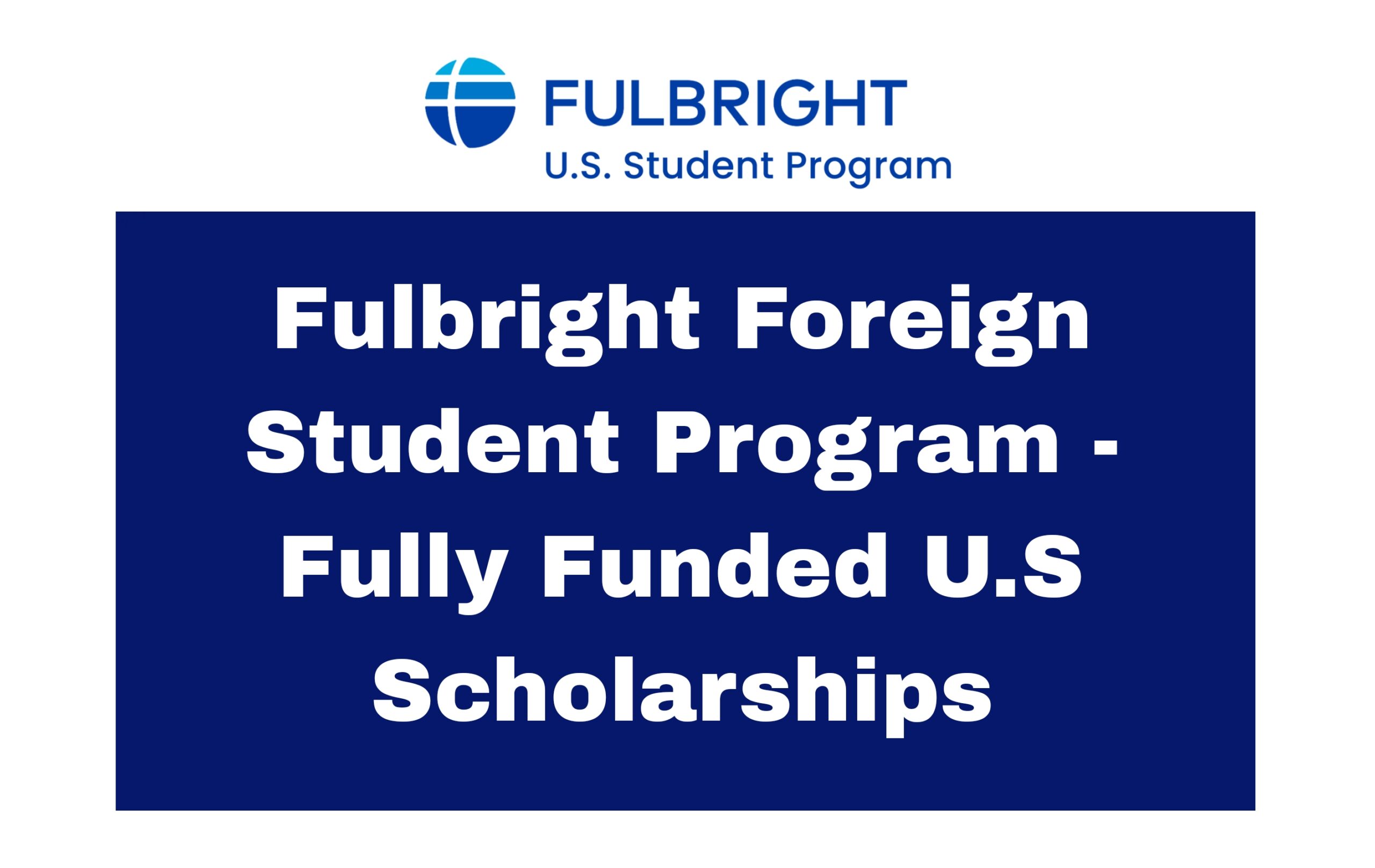The Fulbright U.S. Student Program is America’s flagship international exchange initiative, funded by the U.S. Department of State. It offers U.S. citizens the chance to study, research, or teach English abroad in more than 140 countries.
Study/research grants fund independent projects, graduate study, or creative arts.
English Teaching Assistantships (ETA) place grantees in schools and universities to help teach English while fostering cultural exchange.
Since 1946, over 400,000 alumni have participated, including Nobel laureates, heads of state, and global leaders.
Fulbright U.S. Student Program Facts
Deadline (National): October 7, 2025, 5:00 PM ET
Path: Campus Deadline → National Deadline → IIE Review → Host Country Review → Final Results
Start Date: August–September 2026 (for successful candidates)
Start your U.S. Student Fulbright application here (official portal).
Who Can Apply? (Eligibility Requirements)
Citizenship: Must be a U.S. citizen at the time of application.
Education: Open to graduating seniors, recent bachelor’s degree holders, master’s, doctoral candidates, and young professionals.
Host country restrictions: Some countries exclude dual nationals.
Language requirements: Vary by country; some ETAs require advanced language skills, while others don’t.
Tip: Always check your chosen country’s profile on the Fulbright site for exact eligibility details.
Fulbright Deadlines Explained (Campus vs. National)
This is where many applicants get confused. There are two deadlines:
Campus Deadline (Aug–Sept 2025): If your university has a Fulbright Program Adviser (FPA), you must meet this earlier deadline for internal review and endorsement.
National Deadline (Oct 7, 2025, 5 PM ET): Final cutoff for all applicants, including “at-large” (those not affiliated with a campus).
Pro Tip: Treat your campus deadline as the “real” one—it ensures feedback and endorsement.
Fulbright Application Checklist (2025 Intake)
Here’s what you’ll need to submit:
✅ Online application form (via Fulbright Online portal).
✅ Statement of Grant Purpose (1–2 pages, project-specific for Study/Research).
✅ Personal Statement (1 page, about your story and motivations).
✅ 3 recommendations.
✅ Official transcripts.
✅ Language evaluation (if required).
✅ Affiliation letter (for study/research applicants).
✅ Campus endorsement (if you’re applying through your university).
Study/Research vs. ETA Awards: Which Path Fits You?
Study/Research Grant:
Focus: Independent academic, creative, or professional projects.
Requires: Detailed project plan + host affiliation.
Best for: Aspiring researchers, artists, and grad students.
English Teaching Assistantship (ETA):
Focus: Supporting English instruction in schools/universities.
Requires: Teaching, leadership, or cross-cultural experience.
Best for: Those passionate about education and cultural exchange.
If you’re unsure, ask: Do I want to design a project (research) or immerse myself in classrooms and communities (ETA)?
Choosing the Right Host Country
Factors to consider:
Competitiveness: Some countries are extremely selective.
Language requirements: Certain ETAs require strong host-language skills.
Program structure: Some countries emphasize ETAs; others, research.
Personal alignment: Your project/skills must match the host’s priorities.
💡 Use the Fulbright Country Summaries to compare requirements before committing.
Essays: How to Write Winning Fulbright Statements
Statement of Grant Purpose (Study/Research):
Be clear, specific, and feasible.
Show why your project matters to the host country.
Demonstrate preparation (affiliations, resources).
Personal Statement:
Highlight leadership, adaptability, and motivation.
Share your “Why Fulbright, why now?” story.
Show how you’ll engage with your host community.
Common mistakes:
Being too vague about your project.
Writing an autobiography instead of showing adaptability.
Forgetting to tailor to the host country.
Recommendations: Who to Ask & How to Guide Them
Choose varied recommenders (professor, work supervisor, community leader).
Give them ample time (at least 4–6 weeks).
Provide them with your draft essays and Fulbright goals.
Emphasize cross-cultural adaptability, leadership, and resilience.
Weak, generic recommendations can sink otherwise strong applications.
The Selection Process (Step by Step)
Campus Review (if applicable): Your university committee reviews and endorses.
National Screening Committees: Review by discipline/region experts.
Host Country Review: Local panels evaluate shortlisted applicants.
Final Approval: The J. William Fulbright Foreign Scholarship Board confirms.
Fulbright 2026 Results Timeline
Semi-finalist notifications: January–February 2026
Finalist notifications: March–April 2026
Placement confirmations: May–June 2026
Departure to host country: August–September 2026
Life After Fulbright: Obligations & Alumni Network
Return requirement: Must return to the U.S. for at least 2 years (for J-1 visa compliance).
Alumni network: Access to 400,000+ alumni globally.
Ambassador role: You’re expected to share U.S. culture abroad and bring back experiences.
FAQs Fulbright U.S. Student Program
Do I need GRE scores? → No, Fulbright does not require the GRE.
Can I apply to more than one country? → No, you must choose one.
What if my university doesn’t have a Fulbright adviser? → Apply “at-large.”
Can professionals apply? → Yes, if you meet eligibility.
Can I reapply if not selected? → Absolutely, many Fulbrighters succeed on a second try.
Conclusion
The Fulbright U.S. Student Program 2026–27 application deadline is October 7, 2025. Whether you’re applying for an ETA or a research/study grant, the best applications come from those who start early and plan carefully.
Start your Fulbright U.S. Student Application now
Related article you might not want to miss: Fully Funded Scholarships for International Students

